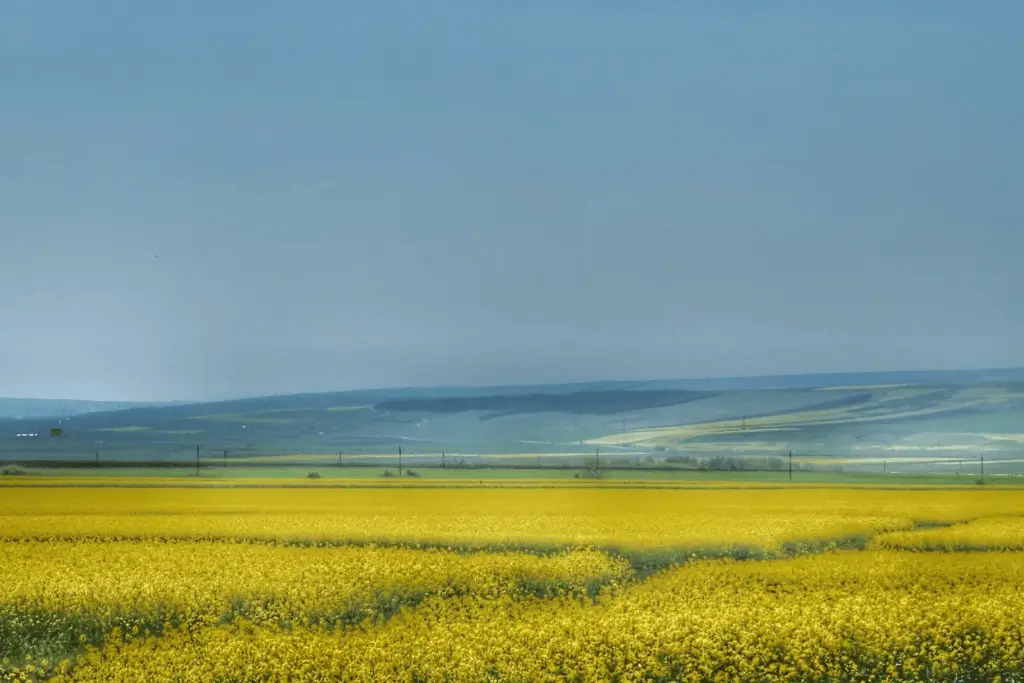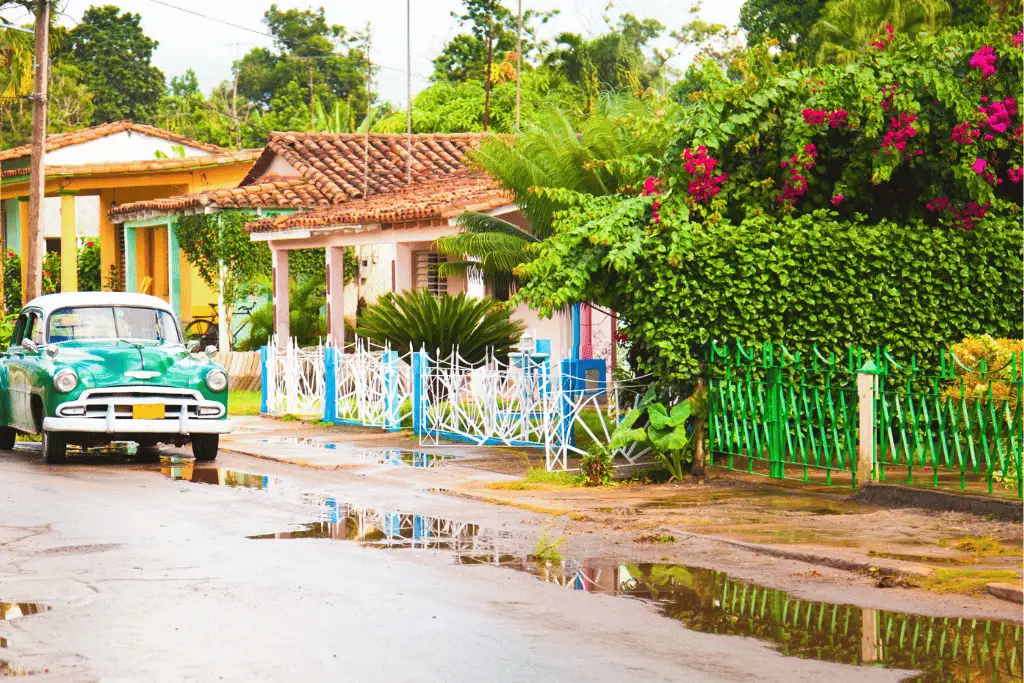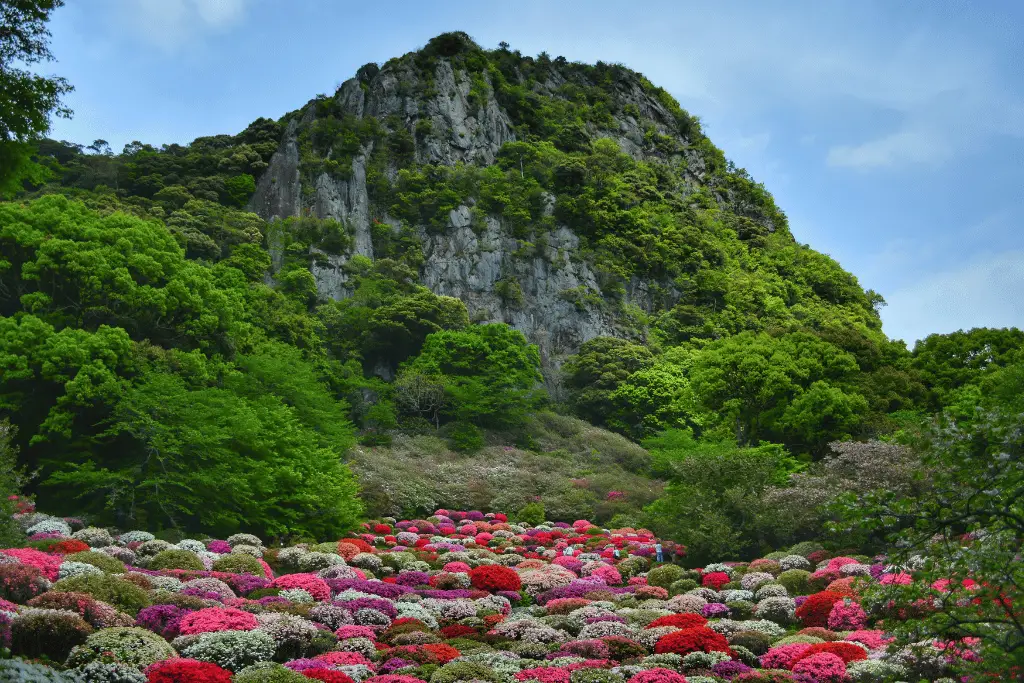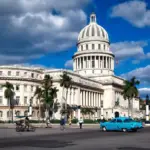
Cuba, a Caribbean gem known for its vibrant culture, stunning beaches, and rich history, is a destination that captivates the hearts of travelers from around the world. Choosing the right time to visit this tropical paradise can significantly impact your experience, as Cuba boasts diverse seasons that offer unique attractions and activities. In this four-part series, we’ll delve into the intricacies of the Cuban climate and the events that shape the island’s calendar. Let’s embark on a journey to discover the best time to visit Cuba and make the most of your adventure.
Understanding Cuba’s Climate: A Year-Round Tropical Escape
Cuba enjoys a tropical climate, making it an enticing destination for sun-seekers and culture enthusiasts alike. The island experiences two primary seasons: the wet season and the dry season. Understanding these seasons is crucial for planning a trip that aligns with your preferences and interests.
The Dry Season (November to April): Embracing Sunshine and Mild Temperatures

The dry season is undoubtedly the most popular time to visit Cuba, attracting a plethora of travelers eager to soak up the sun and enjoy outdoor activities. Running from November to April, this season boasts clear skies, lower humidity levels, and mild temperatures, making it ideal for exploring the island’s diverse landscapes. The early months of the dry season offer pleasant weather and serve as a sweet spot between the rainy season and the peak tourist influx. Travelers can revel in the festive atmosphere as the country gears up for various celebrations, including the lively Fiesta de la Virgen de la Caridad. This period marks the peak of the dry season, with January being particularly popular among tourists. The weather is consistently sunny, making it an excellent time for beach lovers to indulge in the pristine sands of Varadero or Cayo Coco. Cultural enthusiasts can also immerse themselves in the vibrant Havana Jazz Festival, a celebration of Cuba’s rich musical heritage.
Navigating the Shoulder Seasons:

As spring transitions into summer, Cuba experiences a transition between the dry and wet seasons. May and June constitute the shoulder seasons, offering a unique blend of advantages for those looking to explore the island with fewer crowds. While the humidity starts to rise, May is a fantastic time for budget-conscious travelers. Accommodations and activities may be more affordable, and the landscape is lush and vibrant from the recent rains. Keep in mind that late May brings the onset of the rainy season, so plan your visit accordingly. Early June can still be a viable time to visit, but as the month progresses, the chances of rain increase. If you don’t mind occasional showers and want to experience a quieter Cuba, June might be the perfect fit for you.
The Wet Season (July to October): Navigating Tropical Showers and Hurricanes
The wet season, spanning from July to October, introduces a different side of Cuba, characterized by tropical showers and the potential for hurricanes. While this period sees fewer tourists, it requires careful planning to ensure a smooth and enjoyable journey. Embrace the vibrant culture of Santiago de Cuba during the Carnival, held in late July. Despite the occasional downpour, you’ll witness lively parades, music, and dance that showcase the heart and soul of the Cuban people. These months are the peak of hurricane season in the Caribbean. While the likelihood of a direct hit is relatively low, it’s essential to monitor weather forecasts and have contingency plans in place. If you’re a risk-taker and can adapt to unpredictable weather, the wet season might offer a unique and serene experience, with lush landscapes and fewer tourists.
Choosing the Best Time for Your Cuban Adventure
Deciding the best time to visit Cuba depends on your preferences, interests, and tolerance for weather variations. The dry season, from November to April, is a safe bet for optimal weather conditions and a bustling atmosphere. If you prefer a quieter experience and are willing to navigate occasional rain, the shoulder seasons of May and June might be the sweet spot. Meanwhile, the wet season from July to October is for the adventurous souls who can embrace the unpredictability of tropical weather.
In the next part of our series, we’ll delve into the unique events and festivals that grace Cuba’s calendar throughout the year, adding an extra layer of charm to your travel plans. Join us as we explore the cultural richness that awaits you in this captivating Caribbean island.
Festivals and Events: A Kaleidoscope of Cuban Culture

Kicking off the year with a musical crescendo, the Havana Jazz Festival in January attracts jazz enthusiasts from around the world. Held in the capital city, this event features both local and international artists, turning Havana into a rhythmic haven. The fusion of Cuban rhythms and global jazz influences creates an electrifying atmosphere that resonates through the city’s streets and venues.
Santiago de Cuba, often considered the cultural heart of the nation, hosts one of the most vibrant carnivals in February. The Carnival de Santiago de Cuba is a kaleidoscope of colors, rhythms, and traditional dances. The streets come alive with processions, music, and the contagious energy of the locals. It’s a spectacle that provides a deep dive into Cuba’s Afro-Caribbean roots and is not to be missed if you find yourself on the island during February.
March: Habanos Festival in Havana
For aficionados of the renowned Cuban cigars, March brings the Habanos Festival to Havana. This event is a celebration of the country’s cigar industry, showcasing the craftsmanship and tradition behind the world-famous Cuban cigars. Whether you’re a cigar connoisseur or just curious about the process, the Habanos Festival offers a unique insight into this integral aspect of Cuban culture.
As spring unfolds, the Romerías de Mayo in Holguín marks a celebration of Cuban visual arts and cultural expression. This festival, held in May, features vibrant parades, art exhibitions, and performances. It’s a testament to Cuba’s commitment to fostering creativity and a great opportunity to witness the artistic spirit that permeates the island.
July: Carnival of Havana
July brings the Carnival of Havana, a colorful extravaganza that engulfs the capital in a whirlwind of festivities. Traditional costumes, lively music, and energetic dance performances flood the streets, creating an unforgettable spectacle. The Carnival of Havana is a testament to the resilience and joyous spirit of the Cuban people, offering a unique cultural experience during the wet season.
Choosing the Perfect Cultural Convergence
When planning your visit to Cuba, aligning your trip with these cultural events can elevate your experience, providing a deeper understanding of the island’s rich heritage. If you’re a music enthusiast, January’s Havana Jazz Festival beckons, while February brings the rhythmic joy of the Carnival de Santiago de Cuba. For those intrigued by the art of cigar-making, March’s Habanos Festival is an ideal choice.
May’s Romerías de Mayo showcases Cuba’s commitment to the arts, and July’s Carnival of Havana adds a burst of color and vibrancy to the wet season. Consider your interests and preferences as you navigate Cuba’s cultural calendar, ensuring that your visit coincides with events that resonate with your passions.
In the next part of our series, we’ll delve into the natural wonders and diverse landscapes that make Cuba a haven for outdoor enthusiasts. From pristine beaches to lush valleys, join us as we explore the breathtaking beauty that awaits you on this Caribbean island.
Embracing Nature’s Bounty:

As our exploration of the best time to visit Cuba continues, we now turn our attention to the island’s natural wonders and diverse landscapes. From pristine beaches to lush valleys, Cuba beckons outdoor enthusiasts with its breathtaking beauty. In this segment, we’ll guide you through the distinct ecosystems and seasonal highlights that make the Caribbean island a haven for nature lovers.
Varadero’s White Sands: A Paradise in the Dry Season
The dry season, spanning from November to April, is the perfect time for beach aficionados to bask in the sun along the iconic shores of Varadero. Renowned for its powdery white sands and crystal-clear waters, Varadero offers a postcard-perfect setting for relaxation and water activities. Dive into the turquoise depths for a snorkeling adventure or simply unwind on the beach, savoring the serenity that the dry season brings to this coastal haven.
Vinales Valley: A Verdant Escape in the Shoulder Seasons
Venture inland during the shoulder seasons of May and June to discover the verdant landscapes of Vinales Valley. These months, characterized by occasional showers and lush greenery, showcase Cuba’s countryside at its finest. The tobacco fields, mogotes (limestone hills), and vibrant farmland come alive, providing a picturesque backdrop for hiking and exploring the unique karst terrain. Immerse yourself in the rural charm of Vinales, where the slower pace of life allows you to connect with nature and the local community.
Cayo Coco’s Marine Marvels: A Summer Escape
While the wet season may deter some travelers, it presents a unique opportunity for marine enthusiasts to explore the underwater wonders around Cayo Coco. The summer months bring warmer waters and vibrant marine life, making it an excellent time for diving and snorkeling. Encounter colorful coral reefs, tropical fish, and other marine species that thrive in the Caribbean’s warm embrace. Embrace the wet season’s hidden treasures as you delve into the depths of Cayo Coco’s aquatic paradise.
Topes de Collantes: Autumnal Splendor in the Mountains
For those seeking a cooler escape, the autumn months of September to November are ideal for exploring the mountainous terrain of Topes de Collantes. Located within the Escambray Mountains, Topes de Collantes offers a refreshing retreat from the coastal warmth. Hike through lush forests, discover hidden waterfalls, and relish the cool mountain air. The fall foliage adds a touch of color to the landscape, creating a picturesque setting for nature lovers and hiking enthusiasts.
Striking the Perfect Balance
Whether you’re drawn to the sun-drenched beaches, lush valleys, or mountainous retreats, Cuba’s diverse landscapes offer a spectrum of natural wonders throughout the year. Consider your outdoor preferences and the unique ecosystems you wish to explore when planning your visit. From the vibrant marine life of Cayo Coco to the autumnal splendor of Topes de Collantes, each season unveils a different facet of Cuba’s natural beauty.
In our final installment, we’ll tie together the threads of climate, culture, and nature to help you make an informed decision on the best time to embark on your Cuban adventure. Join us as we craft a comprehensive conclusion that encapsulates the essence of planning the perfect visit to this enchanting Caribbean island.
Crafting Your Cuban Adventure:
As we conclude our journey through the best time to visit Cuba, we’ve explored the intricate interplay of climate, culture, and nature that shapes the island’s allure. From the sunny beaches of Varadero to the cultural extravaganzas of Havana, and the natural wonders of Vinales Valley to the underwater marvels of Cayo Coco, each season unveils a unique facet of Cuba’s charm. Now, let’s weave together the threads of our exploration to help you craft the perfect Cuban adventure.
Personalizing Your Cuban Experience
Understanding your travel priorities is essential in determining the best time to visit Cuba. If you’re a sun-seeker, the dry season from November to April offers the ideal beach weather, while culture enthusiasts may find the festivities of the Havana Jazz Festival in January or the Carnival de Santiago de Cuba in February irresistible. For nature lovers, exploring Vinales Valley’s lush landscapes in the shoulder seasons or diving into Cayo Coco’s marine marvels during the wet season could be the highlight of your trip.
Tolerating Weather Variations:

Cuba’s climate, characterized by a distinct wet and dry season, introduces variations that may influence your travel experience. If you’re comfortable with occasional rain and the potential for tropical storms, the shoulder seasons or even the wet season can provide unique advantages, such as fewer crowds and vibrant landscapes. However, if you prefer more predictable weather conditions, the dry season remains the safest bet for a sun-soaked adventure.
Strategizing Your Itinerary
Crafting an itinerary that seamlessly blends cultural events with natural wonders ensures a well-rounded Cuban experience. Attend the Havana Jazz Festival or the Carnival de Santiago de Cuba during the dry season, and complement these cultural immersions with beach days in Varadero. If you’re intrigued by Cuban art and visual expressions, consider visiting during the Romerías de Mayo in Holguín .Take advantage of Cuba’s diverse landscapes by planning your itinerary around specific regions and their seasonal highlights. From the beaches of Varadero to the valleys of Vinales, the mountains of Topes de Collantes to the marine wonders of Cayo Coco, each destination offers a unique flavor that can be savored depending on the time of year.
Making an Informed Decision
In conclusion, the best time to visit Cuba hinges on a delicate balance between your interests, tolerance for weather variations, and the desire to witness specific cultural or natural highlights. Whether you’re drawn to the lively festivals, pristine beaches, lush valleys, or underwater ecosystems, Cuba has something to offer throughout the year.
By delving into the nuances of Cuba’s climate, cultural calendar, and natural wonders, you can tailor your visit to align with your passions and preferences. Embrace the warmth of the Cuban sun, dance to the rhythmic beats of local music, explore the diverse landscapes, and immerse yourself in the vibrant culture that defines this Caribbean gem.
As you embark on your Cuban adventure, may the sun shine on your chosen season, and may the rhythm of Cuba resonate in your heart, creating memories that linger long after you’ve bid the island farewell. Happy travels!
Frequently Asked Questions About when is the best time to visit Cuba?
As you prepare for your journey to Cuba, it’s natural to have questions about the best time to visit, what to expect, and how to make the most of your experience. Below, we’ve compiled a comprehensive FAQ to address common queries and provide valuable insights for your Cuban adventure.
When is the best time to visit Cuba?
The best time to visit Cuba depends on your preferences. The dry season, from November to April, is popular for its pleasant weather, while the shoulder seasons (May and June) offer a balance between fewer crowds and occasional rain. The wet season, from July to October, presents lush landscapes but comes with the possibility of tropical storms.
Are hurricanes a significant concern during the wet season?
While the likelihood of a direct hit is relatively low, the wet season does coincide with the peak of hurricane activity in the Caribbean. Travelers planning a visit during this time should monitor weather forecasts and be prepared for potential disruptions. It’s advisable to have contingency plans and travel insurance to navigate any unforeseen circumstances.
What cultural events can I experience in Cuba?
Cuba hosts a myriad of cultural events throughout the year. Notable festivals include the Havana Jazz Festival in January, the Carnival de Santiago de Cuba in February, the Habanos Festival in March, Romerías de Mayo in Holguín in May, and the Carnival of Havana in July. Check the local calendar when planning your visit to align with these vibrant celebrations.
Which regions offer the best natural attractions?
Cuba boasts diverse landscapes, each with its unique appeal. Varadero is renowned for its pristine beaches, Vinales Valley for lush countryside, Topes de Collantes for mountainous terrain, and Cayo Coco for underwater marvels. Tailor your itinerary based on the natural wonders that resonate with your interests.
How can I blend cultural and natural experiences in my itinerary?
Crafting a well-rounded itinerary involves strategically combining cultural events with visits to specific regions. Attend festivals during the dry season, explore beaches in Varadero, and venture inland to Vinales Valley or the mountains of Topes de Collantes. Consider the unique offerings of each region and plan accordingly.
What should I pack for my trip to Cuba?
Pack according to the season of your visit. Light and breathable clothing, sunscreen, and a hat are essential year-round. If visiting during the wet season, pack a waterproof jacket and consider quick-dry clothing. Comfortable walking shoes are recommended for exploring diverse landscapes
Do I need a visa to visit Cuba?
Yes, most travelers to Cuba require a visa, also known as a tourist card. Check with the Cuban consulate or embassy in your country for specific requirements and application procedures. Ensure your passport is valid for at least six months beyond your planned departure date.
How can I exchange currency in Cuba?
The official currency in Cuba is the Cuban Convertible Peso (CUC). Currency exchange is available at airports, hotels, and banks. It’s advisable to exchange currency at official exchange offices (CADECAs) to ensure fair rates. Credit cards are accepted in larger establishments, but it’s wise to carry cash for smaller purchases and in more remote areas.
Can I use my mobile phone in Cuba?
Cuba has limited mobile network coverage, and international roaming can be expensive. Consider purchasing a local SIM card upon arrival for better connectivity. Wi-Fi is available in certain areas, primarily in hotels and public hotspots, but the internet speed may be slower compared to other destinations.
Conclusion: Preparing for an Unforgettable Journey
As you embark on your Cuban adventure, these FAQs aim to equip you with the necessary information to plan a memorable and enriching experience. From understanding the weather patterns to immersing yourself in cultural festivities and exploring diverse landscapes, Cuba offers a tapestry of experiences waiting to be discovered. Safe travels!






